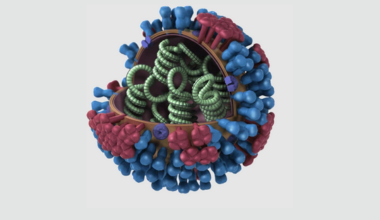
Updated February 7, 2025
What is Highly Pathogenic Avian Influenza?
Highly Pathogenic Avian Influenza (HPAI) is an infectious viral disease caused by Influenza A viruses (e.g., H5N1). Avian Influenza A viruses spread naturally among wild, migratory birds (e.g., waterfowl) and can infect domestic birds (e.g., chickens, turkeys, pheasants, quail, domestic ducks, geese, and guinea fowl) and other animal species. In April 2024, Highly Pathogenic Avian Influenza was first detected in dairy cattle herds and is from the same virus subtype as avian influenza.
How is Avian Influenza classified?
Avian influenza is caused by influenza A viruses. Influenza A viruses are classified into two categories based on the severity of illness: low pathogenic influenza A viruses and highly pathogenic influenza A viruses. Both high and low pathogenic viruses spread easily among wild, migratory birds. Some virus strains can infect domesticated birds and mammals both wild and domestic. Infections caused by influenza A viruses can be highly pathogenic and are highly contagious and often deadly in birds. While most influenza viruses do not normally infect people, human infections have occurred with some avian influenza types and are most often associated with direct or indirect contact with infected birds or animals.
Is HPAI a food safety concern?
HPAI is not a food safety concern. Influenza viruses are easily destroyed by heat and cooking food to the proper internal temperatures is an effective measure to kill bacteria and inactivate viruses, including influenza viruses.
What is being done to prevent the spread of Avian Influenza?
Exclusion is the primary measure to prevent the introduction of avian influenza into poultry. In addition, only food from heathy animals is authorized for distribution into interstate commerce for human consumption. In the United Safety, federal agencies have continuous inspection requirements for all animals and rigorous programs for monitoring and preventing zoonic diseases, such as HPAI. Any animal exposed to HPAI or shows signs of illness are immediately quarantined and does not enter the food supply. On December 30, 2024, APHIS announced the requirement for farmers to undergo a biosecurity audit before restocking their poultry after an HPAI detection, and before receiving future indemnity payments.
Are there vaccines available?
There are no human vaccines available for the prevention of HPAI. Seasonal flu shots do not provide protection against HPAI viruses.
The use of vaccines in animals, including vaccines for avian influenza, are highly regulated in the United States. Poultry vaccines for avian influenza are not approved for use in the United States. While there are vaccines available for the prevention of HPAI are available, there is uncertainty about their effectiveness due to the ongoing changes to the virus. There are no approved vaccine for poultry According to USDA, “current HPAI vaccines, licensed or unlicensed, do not meet the criteria for an ideal vaccine candidate. While there are U.S. licensed avian influenza vaccines for certain virus subtypes (H5N1, H5N3, and H5N9), none are fully matched to the more virulent strain of H5N1 found in the current outbreak.” In 2016, USDA created a national vaccine stockpile for use in commercial poultry, but the use of these vaccines has yet to be deployed. Due to the ongoing outbreaks in commercial poultry flocks and the introduction of new HPAI strains, USDA has stated intentions to pursue a stockpile that matches the current outbreak strains.
Avian Influenza Resources
USDA APHIS Avian Influenza Information
USDA APHIS FAQ: Detection of Highly Pathogenic Avian Influenza in Dairy Herds
APHIS Surveillance of Highly Pathogenic Avian Influenza
FDA Q&A Regarding Milk Safety During Highly Pathogenic Avian Influenza (HPAI) Outbreaks
FDA Q&A Regarding the Safety of Eggs During HPAI Outbreaks
CDC Avian Influenza Information
CDC Avian Influenza in Animals
American Veterinary Medical Association – Influenza A in U.S. Dairy Cattle Updates
International Dairy Foods Association (IDFA) HPAI in Dairy Cattle Resource Page
National Chicken Council Avian Influenza Information
HPAI Outbreak and Response - FMI Board Briefing Notes (May 14, 2024)
Production and Market Reports
USDA AMS Egg Market Weekly Overview
USDA ESMIS Chicken and Egg Production Monthly Report
Additional Questions? Please contact foodsafetyteam@fmi.org.
- Food Safety & Security
 Industry Topics address your specific area of expertise with resources, reports, events and more.
Industry Topics address your specific area of expertise with resources, reports, events and more.
 Our Research covers consumer behavior and retail operation benchmarks so you can make informed business decisions.
Our Research covers consumer behavior and retail operation benchmarks so you can make informed business decisions.
 Events and Education including online and in-person help you advance your food retail career.
Events and Education including online and in-person help you advance your food retail career.
 Food Safety training, resources and guidance that help you create a company food safety culture.
Food Safety training, resources and guidance that help you create a company food safety culture.
 Government Affairs work — federal and state — on the latest food industry policy, regulatory and legislative issues.
Government Affairs work — federal and state — on the latest food industry policy, regulatory and legislative issues.
 Get Involved. From industry awards to newsletters and committees, these resources help you take advantage of your membership.
Get Involved. From industry awards to newsletters and committees, these resources help you take advantage of your membership.
 Best practices, guidance documents, infographics, signage and more for the food industry on the COVID-19 pandemic.
Best practices, guidance documents, infographics, signage and more for the food industry on the COVID-19 pandemic.
